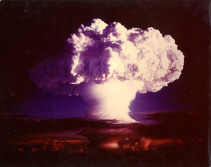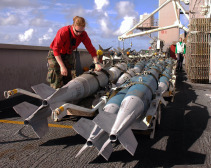Nuclear Nonproliferation
Project Sections
Analyses
FAS discussion on nuclear nonproliferation
History
Historical overview and interactive timeline
Verification
Technical aspects of nuclear nonproliferation

Nuclear non-proliferation refers to the prevention of the spread of nuclear weapons to countries that currently do not have a nuclear weapon capability, or “horizontal proliferation.” Nuclear non-proliferation can also refer to the qualitative improvement of existing nuclear weapon stockpiles, also called “vertical proliferation.” In the 21st Century, non-state actors such as terrorist organizations have become a new focus for nuclear non-proliferation efforts, as by definition these actors have no territory on which to threaten retaliation for a nuclear attack and so cannot be traditionally deterred by state actors. While regional tensions fuel nuclear arms races and ambitions, terrorist groups seek to acquire and use nuclear weapons, and nuclear weapon states’ nuclear arsenals (and their improvements and maintenance) are kept under conditions of extreme secrecy, concerns over the prevention of nuclear proliferation are ironically more pronounced today than even during the darkest days of the Cold War. 
Treaties and Documents
Nuclear Security

.






